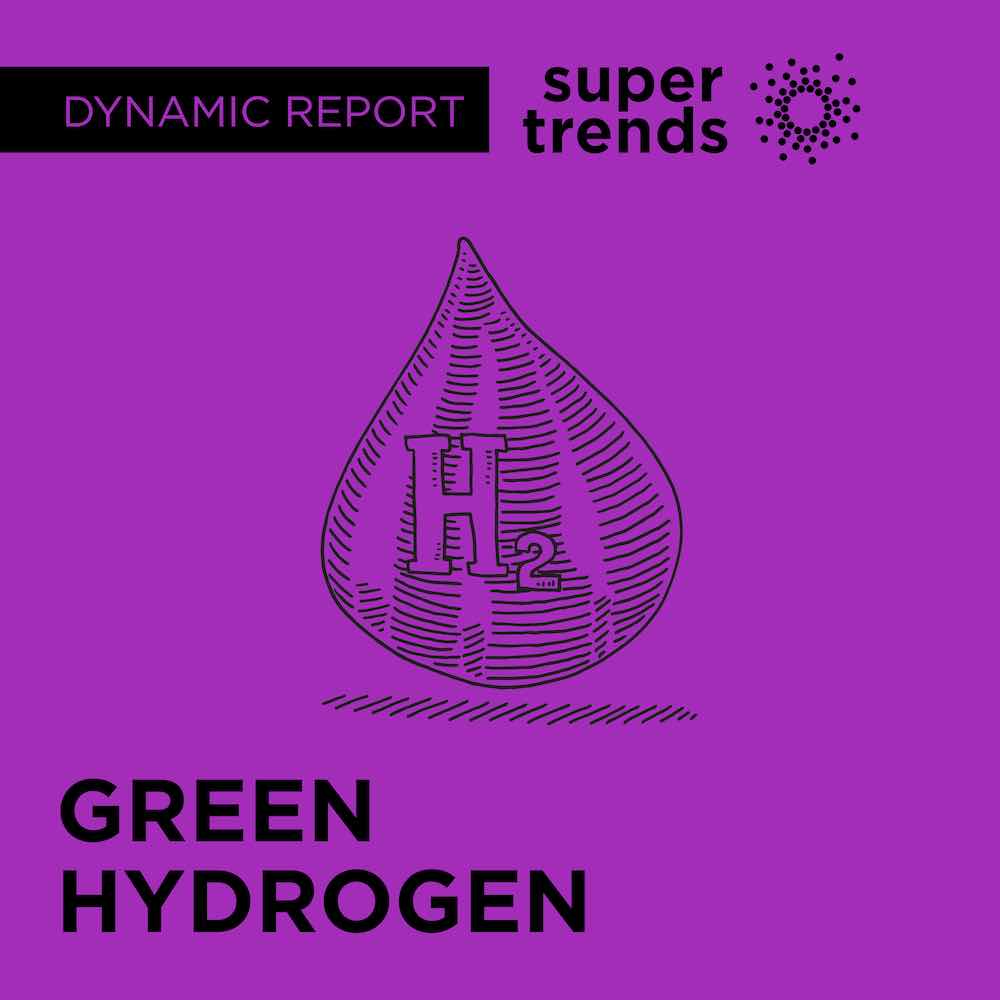Supertrends in Green Hydrogen
If you are an investor looking for the most promising technology trend and the next great idea, or someone whose industry will or is already impacted by the use of green hydrogen, or simply wish to know what is happening in this field, then this report is for you. This document will provide you with a complete view of the current green hydrogen ecosystem as well as the key players and investors involved.
By purchasing this report you will receive:
- full access to the online version of the report and the two databases with relevant information
- online access to all the updates on this report (we touch base with the industry weekly and we add our findings to the report 4 times per year)
- one year of free membership to our Pro app, for one user (learn more about the Pro app)
What you can expect from the report
This report provides a guide to Supertrends in Green Hydrogen, an exciting new business with the potential to transform the energy sector and related industries. Inside, you will find a comprehensive study of the Green H2 market and the associated value chain, as well as detailed information on its applications and the processes involved. The report offers a clear analysis of the benefits and drawbacks of the technology, followed by a discussion of its future prospects and disruptive potential.
Preface: A Big Bang for Green Hydrogen?

Supertrends co-founder Lars Tvede introduces the topic and business of green hydrogen. He discusses the prospects for a “Big Bang” in this sector and lists some key elements that will be needed for hydrogen to break through and become competitive.
1. Introduction

This section serves as a navigational aid for the reader. It provides a guide through this report, offering a short outline of each chapter and its highlights.
2. Timeline

This chapter examines the history of hydrogen production and use. It examines changes in perception and perspectives in hydrogen production and use, and serves as an introduction to hydrogen as a fuel source. It examines the various uses of hydrogen in different sectors.
3. Market Analysis and Active Players

This chapter lays out the value chain involved in the production and use of green hydrogen. It examines the modalities, challenges and potentials of each element of that value chain, and introduces a number of companies active in each.
4. Consumer Landscape

Hydrogen has a broad range of applications in industry, transport, buildings, and the energy sector. This chapter introduces the various sources, users, and uses of hydrogen in more detail, examining its use as fuel and in chemical and industrial processes. Its impact on the energy industry is also covered in more detail. Attention is given to its potential for decarbonizing the various areas of potential hydrogen use, and to the relevant economics required for making that use cost-effective.
5. Processes

This chapter introduces the various processes involved in the production, storage, distribution, and use of hydrogen, including detailed descriptions of the different types of electrolyzers, their advantages, and the drawbacks of each. It concludes with an overview of factors affecting market maturity, up-scaling, and mass commercialization.
6. Benefits

This chapter discusses how widespread uptake of green hydrogen can help with mitigating climate change and protect the environment, as well as its potential role as a catalyst for economic growth and job creation. Energy- and emissions-intensive industries can use green hydrogen to optimize their choices within the framework of emissions trading schemes or to hedge against fluctuations in the energy markets.
7. Challenges

8. Future Outlook

In conclusion, we look at how green hydrogen technology will disrupt and transform existing energy systems and business models. We discuss factors affecting timelines for the decarbonization of heavy industries and the effects of large-scale hydrogen integration in the energy industry and other sectors, both upstream and downstream. Regulatory action, we conclude, will largely be informed by national, regional, and global policy goals.
Units and abbreviations





